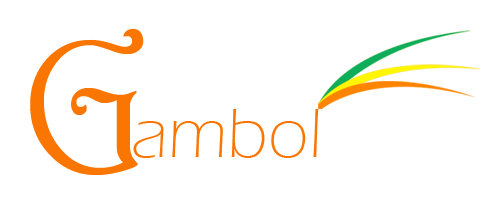

GO









Maria Yuryevna Sharapova (Russian: (help info), Mariya Yurevna Sharapova [pronounced sha-RAH-po-va[citation needed]] Russian pronunciation: born April 19, 1987) is a former World No. 1 Russian professional tennis player. She has won 3 Grand Slam titles (2004 Wimbledon, 2006 US Open, and 2008 Australian Open). She was also runner-up at the 2007 Australian Open. She is currently ranked World No. 17.
Sharapova made her professional breakthrough in 2004 when, at age 17, she upset two-time defending champion and top seed Serena Williams in the 2004 Wimbledon final for her first Grand Slam singles title. She entered the top ten of the WTA Rankings with this win. Despite not winning a major in 2005, Sharapova briefly held the number one ranking, and reached three Grand Slam semifinals, losing to the eventual champion each time. She ultimately won her second major at the 2006 US Open defeating then-World No. 1 Amelie Mauresmo in the semifinals and World No. 2 Justine Henin in the final. Sharapova's 2007 season was plagued with a chronic shoulder injury, and saw her ranking fall out of the top 5 for the first time in two years. She ultimately won her third Grand Slam at the 2008 Australian Open, defeating Henin in the quarterfinals and Ana Ivanovic in the final. After reclaiming the number one ranking in May 2008, Sharapova's shoulder problems re-surfaced, ultimately requiring surgery in October and forcing her out of the game for nearly ten months. Sharapova returned in May 2009 and was ranked No. 126 in the world due to her extensive lay-off. Since her comeback, Sharapova has won 3 singles titles (bringing her career total to 22) and recovered her ranking to World No. 12.
Sharapova's public profile extends beyond tennis, as she has been featured in a number of modeling assignments, including a feature in Sports Illustrated Swimsuit Issue. Also she has been featured in many advertisements including: Nike, Prince, Canon and many more, also being the face of many fashion houses, primarily Cole Haan. Sharapova was the most searched-for athlete on Yahoo! in both 2005 and 2008. Since February 2007, she has been a United Nations Development Project Goodwill Ambassador, concerned specifically with the Chernobyl Recovery and Development Programme.
Early life
Sharapova was born in 1987 to Yuri and Yelena, ethnic Russians, in the town of Nyagan' in Siberia, Russia. Her parents moved from Gomel, Belarus after the Chernobyl nuclear accident in 1986 affected the region. When Sharapova was two, the family moved to Sochi where her father befriended Aleksandr Kafelnikov, whose son Yevgeny would go on to win two Grand Slam singles titles and became Russia's first ever World No. 1 tennis player. Aleksandr gave Sharapova her first tennis racket at the age of four, whereupon she began practicing regularly with her father in a local park. She took her first tennis lessons with veteran Russian coach Yuri Yutkin, who was instantly impressed when he first saw her, noting her "exceptional hand-eye co-ordination."
At the age of seven, Sharapova attended a tennis clinic in Moscow run by Martina Navratilova, who recommended professional training at the Nick Bollettieri Tennis Academy in Florida, which had previously trained players such as Andre Agassi, Monica Seles and Anna Kournikova. With money tight, Yuri was forced to borrow the sum that would allow he and his daughter, neither of whom could speak English, to travel to America, which they finally did in 1994. Visa restrictions prevented Sharapova's mother from joining them for two years. Arriving in Florida with just $700 to his name, Sharapova's father took various low-paying jobs, including dish-washing, to fund her lessons until she was old enough to be admitted to the academy. In 1995, she was signed by IMG, who agreed to pay the annual tuition fee of $35,000 for Sharapova to stay at the academy, allowing her to finally enroll at the age of 9.
Playing style
Sharapova is an aggressive baseliner, with power, depth, and angles on her forehand and backhand. Instead of using a traditional volley or overhead smash, she often prefers to hit a powerful "swinging" volley when approaching the net or attacking lobs. Sharapova is thought to have good speed around the court, especially considering her height. At the beginning of 2008, some observers noted that Sharapova had developed her game, showing improved movement and footwork and the addition of a drop shot and sliced backhand to her repertoire of shots.Despite her powerful game, Sharapova's greatest asset is considered to be her mental toughness and competitive spirit, with Nick Bollettieri stating that she is "tough as nails". Sharapova is known for on-court "grunting", which reached a recorded 101 decibels during a match at Wimbledon in 2005. Monica Seles suggested that grunting is involuntary and a part of tennis. When questioned by the media about her grunting, Sharapova urged the media to "just watch the match."
Sharapova at The Championships, Wimbledon in 2009.
Towards the beginning of her career, Sharapova's first and second serves were regarded as powerful, and she was believed to possess one of the best deliveries on the Tour. Since the beginning of 2007, however, problems with her shoulder have reduced the effectiveness of her serve. She has regularly gone through spells where she has routinely produced high numbers of double faults in many of her matches. Two-time US Open singles champion Tracy Austin believes that Sharapova often loses confidence in the rest of her game when she experiences problems with her serve and consequently produces more unforced errors and generally plays more tentatively, while tennis writer Joel Drucker remarked that her serve was the "catalyst for her entire game", and that her struggles with it left her "unmasked." In her return from layoff she used an abbreviated motion, which was somewhat less powerful, and though producing aces but also very high number of double faults. After her early loss at the 2009 US Open, Sharapova returned to a more elongated motion, similar to her pre-surgery serve. She has since been able to produce speeds greater than before, including a 121 mph serve hit at the Birmingham tournament in 2010—the fastest serve of her career.
Surfaces
Because she predicates her game on power, Sharapova's preferred surfaces are the fast-playing hard and grass courts, and she is not as well-suited to the slower clay courts. Sharapova has admitted that she is not as comfortable with her movement on clay compared with other court surfaces and once described herself as like a "cow on ice" after a match on clay. Her limitations on this surface are reflected in her career results. The French Open is the only Grand Slam singles title she has not yet won, though she reached the semifinals there in 2007. She won her first Women's Tennis Association tour title on clay during her eighth year as a touring professional, after previously winning 18 titles on other surfaces.
Ground strokes and Net-Play
She is also known for her phenomenally accurate and powerful groundstrokes. She has a powerful forehand which tends to set up points and create successful winners. Her favorite and most powerful shot is the crosscourt forehand, but it becomes a liability when overused. The backhand, although not as dominant in setting points up, is her more reliable shot—many consider this to be her best asset, and one of tennis' great shots. Her net play is good when on the attack, often she will choose to drive the volley instead of slice volleys, but this is not seen as a strength—this seems to be continually worked on.

